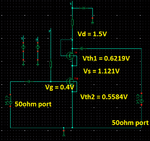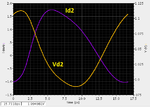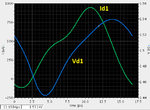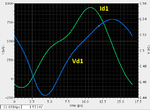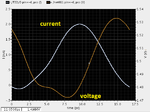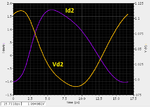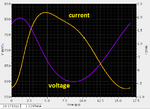natnoraa
Full Member level 1

- Joined
- Jun 19, 2011
- Messages
- 98
- Helped
- 12
- Reputation
- 24
- Reaction score
- 11
- Trophy points
- 1,288
- Activity points
- 2,108
Possibility of a Class C Cascode power amplifier
Hi,
Would like some advice on a cascode Class C power amplifier. Having ran simulations for a couple of days, I am unable to successfully simulate a cascode Class C Power Amplifier. I would like the bottom transistor to operate as a true class C with Vg < Vth while the top transistor operating at saturation with Vds > Vgs -Vth. However, no matter how I bias the Vg of the top transistor, it's always in triode region. Does anyone know of any way or the possibility of this?
Natnoraa
Hi,
Would like some advice on a cascode Class C power amplifier. Having ran simulations for a couple of days, I am unable to successfully simulate a cascode Class C Power Amplifier. I would like the bottom transistor to operate as a true class C with Vg < Vth while the top transistor operating at saturation with Vds > Vgs -Vth. However, no matter how I bias the Vg of the top transistor, it's always in triode region. Does anyone know of any way or the possibility of this?
Natnoraa

